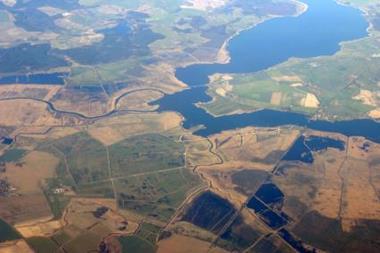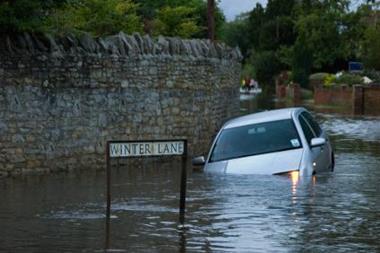Ellen Bennett reports on whether the Pool Re scenario is a viable option for covering flood loss
Royal & SunAlliances Alan Gairns believes that a Pool Re type system to cover flood losses would not work.
He said: “If you build in a flood plain, it is going to flood and it is going to cost £30,000 to 40,000 to repair, so what premium are you going to charge?
The only way a Pool Re scenario is going to work is if you take away flood cover from the insurance industry and basically everybody pays into a pool. On that basis you are going to find that the premiums go up for everybody who is in a low flood risk area, because somebody has to top up that pool to pay for the high risk areas. I do not think that is the best way forward.
“Will it ever happen? I suppose you should never say never, but I think we should be doing everything possible to try to minimise the increase in flood risk and minimise the risk we have at the moment before we jump into a Pool Re scenario.”
Swenja Surminski, the ABI’s climate change policy advisor, agreed. She said: “To underline that, I think it is quite interesting to look at what is going on in the States. If you look at some of the national flood insurance schemes there, they have gone completely bust, because of wrong calculations and assessments. We always use that as a shining example of how not to do it. Assessment of flood risk should be left to professionals.”
Gairns went on to say that a Pool Re solution would cost the general public too much money. He said: “If the government funds it, the bottom line is we will end up paying for it. That is the only way. The government can only take money from taxpayers essentially. I think there is a risk we will all end up paying more than we currently do.
“I suppose you then have the issues about how you manage the claims’ aspect going forward. I do not think it is too big an issue personally. I think there is still room for discussion and for addressing the problem.
“To what extent climate change could take that out of our hands is probably speculation at the moment. If I was a betting man, I think when you look at the late 1990s there were floods almost every year. You went into 2000 and that at the time was a big one and I would have said it would have continued in 2001. It did not; it tailed off and went through a fairly benign period.
“I think one of the issues I have is, in terms of how quickly is government addressing this and what money are they putting into it; they tend to react when there has been an event. We had floods in 2000 and at the next spending review in 2002 they put a whole lot of money into it. We had the June floods and straightaway they are saying in the current spending review we will add another £200m.
“In 2001, 2002 and 2003 it was fairly quiet and they froze the money in 2004. We did not even get an inflation increase in that. In some respects the money has gone backwards.
“It was said by government in 2000 that this was a number one issue, but I am not convinced that actions are living up to that. These are the things we are trying to address at the moment to make sure the funding is adequate going forward.”
Swenja Surminski pointed out that the government does already have an agreement with the insurance industry. She said: “That is the whole background to having the statement of principle, which is a sort of agreement between the insurance industry and government, with the idea of making flood insurance cover as widely available as possible.
“It is recognised that the UK is quite unique in having this wide coverage; there are not many other countries where you can get flood cover as part of your standard product. The market is very competitive; we have seen premiums staying relatively flat in real terms over the last couple of years.
“There is interest in writing this business, so I think the industry is committed. It is just a case of making that risk manageable and ensuring that this agreement and approach can continue through the changes we can potentially expect with climate change, but there is a broad commitment, which applies from both sides.”
Hosted by comedian and actor Tom Allen, 34 Gold, 23 Silver and 22 Bronze awards were handed out across an amazing 34 categories recognising brilliance and innovation right across the breadth of UK general insurance.












































No comments yet